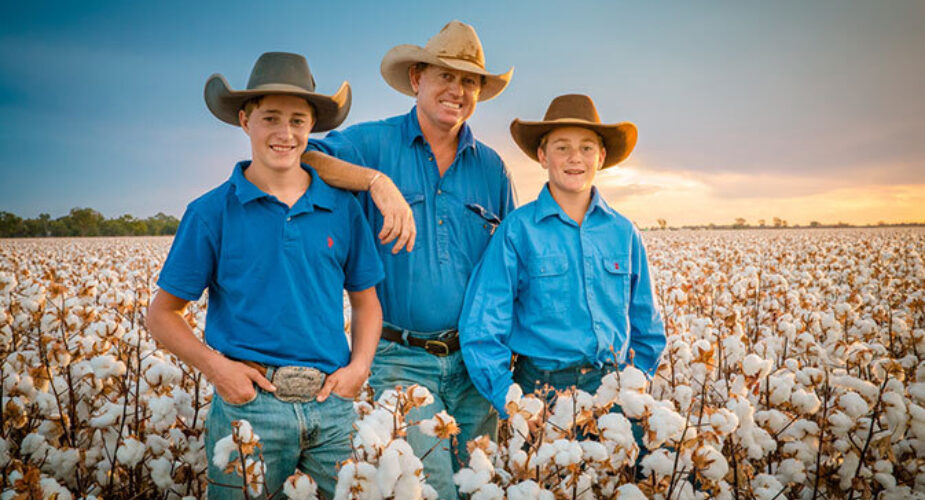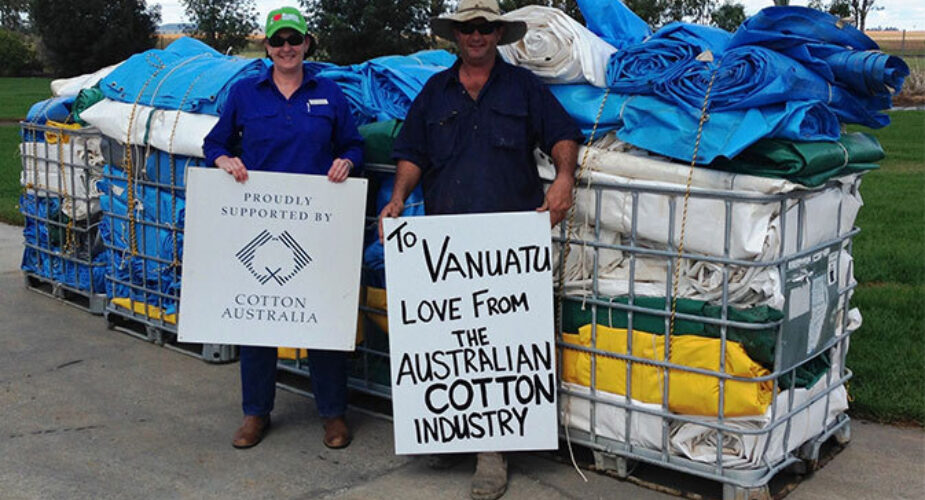Community
- Cotton is grown in more than 200 regional Australian communities.
- Approximately 90% of Australian cotton farms are family-owned.
- The Australian cotton industry generates up to $3 billion per year in export earnings.
Growing areas
Cotton is grown in more than 200 Australian communities and 40 rural and regional local government areas. Locations where cotton is grown include central and southern Queensland, northern, central and southern NSW, northern Victoria, and trial crops in small areas of northern Queensland, northern Western Australia and the Northern Territory.
Throughout these regions there are up to 1,500 cotton farms growing some of the finest quality and highest yielding cotton in the world.
When times are good, and there is plenty of water in the rivers, cotton helps these communities prosper. But when drought sets in and there is no water for cotton (or any other crop), these towns suffer and can take a long time to recover.
The average Australian cotton farm:
- is family-owned and operated;
- directly creates jobs for nine people;
- is run by farmers with an average age of 47 years;
- grows 576 hectares of cotton, comprising 10% of the total farm area;
- supplements cotton with other crops including wheat, chickpeas and sorghum; many Australian cotton farmers also graze sheep and cattle;
- includes natural areas – such as native vegetation and riparian zones – ranging from between 10 - 40% of property area.
Who we are
Approximately 90% of Australia’s cotton businesses are family farms, producing approximately 80% of the crop. These families have often lived and worked in their communities for generations.
Our growers provide jobs, their kids go to school and play sport in rural towns, and they shop locally for agricultural supplies and services.
Cotton growers spend, on average, 82% of expenses in their local area. The majority of cotton business expenses are spent within the immediate local areas of farm businesses, and adjacent regional centres (CRDC Grower Survey). Most cotton growers (nine out of 10, according to an industry survey) regularly contribute to community activities such as events, sponsorships and charities, or are involved in local groups or sports teams. ABS data supports this, showing volunteering rates of cotton growers are slightly above the regional average and well above the national average; cotton growers are more likely to be involved in their community than others living in the region, and farmers nationally.
An extensive system of production, harvesting and ginning provides jobs for mechanics, distributors of farm machinery, consultants and advisors, crop processors and other support services employees. Industries such as banking, transportation, warehousing and shipment merchandising also benefit from a viable Australian cotton industry.
Benefits of a successful cotton industry
- On-farm: providing employment for, on average, nine people (more than ,000 people industry-wide).
- Post farm-gate: the industry directly employs a further 1,700 people working in marketing and exports, cotton classing and in regionally-based cotton gins.
- Australia’s research sector: the industry supports Australia’s research and development organisations and agricultural extension network. Investment in RD&E averages $25 million per annum and employs more than 160 Full-Time Equivalent (FTE) staff, with expertise across many disciplines.
- National accounts: the industry generates up to $3 billion per year in export earnings.


